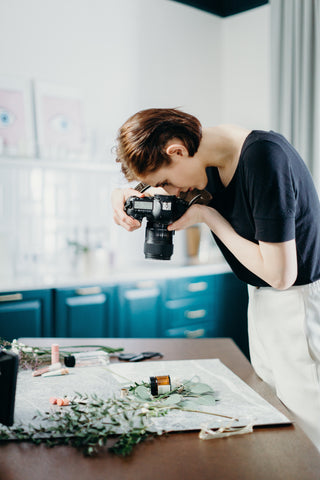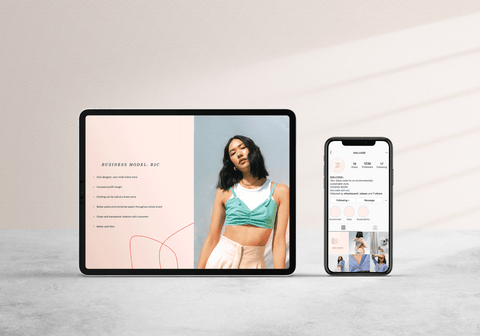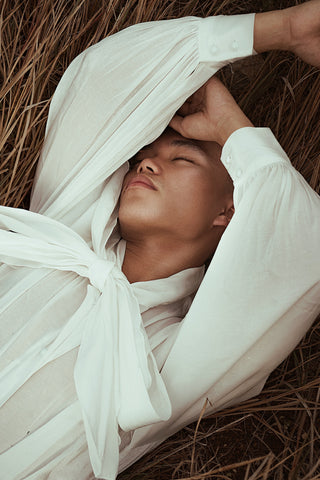Whilst the world is whirling in a global pandemic, it can be hard to navigate the normalities of day-to-day life, whether you’re transitioning into a new role, working from home or even considering going back into study.
Now, however, might actually be the best time to enrol into a new course.
There are plenty of changes occurring within the creative industries, which accounts for a significant amount of the world’s economy. The industry is a creative mecca that creates jobs for artists, hairdressers, fashion designers, seamstresses, buyers, writers and shopping departments—just to name a few. The industry is undergoing rapid changes and will need qualified graduates that are up to date with relevant skills and knowledge during a time of the unknown.

So, here is what we do know:
The Creative Industry is one of the fastest growing sectors on the planet. In Australia, employment in the creative industry is growing at nearly twice the rate of the general Australian workforce.
In Victoria alone, the creative industries make up over 8% of the economy and contribute to almost $23 Billion and over 220,000 jobs.
So instead of being stereotypically hard to ‘break into’, there are actually considerably more jobs available in the creative sector than you would initially assume.
In fact, As a share of the Australian workforce, creative employment has increased steadily since the 1980s, and continues to grow 40% faster than the rest of the economy.
The digital side of the creative industries are also accelerating faster than ever before. Consumers are shopping online more than ever with the temporary closure of physical stores (which contribute for up to 80% of sales before the Coronavirus outbreak).
Moving forward, for a brand to survive, it will need a strong online presence. This means that digital-based roles such as social media managers, copywriters, and content creators will be on the rise.

Consumers’ values are also shifting. They’re paying more attention to sustainability and choosing to shop with brands that have a vision and purpose. They care about where their clothes are coming from and who’s making them, what products they’re putting on their skin, and how they have impacted the environment or been sourced.
Consumers are becoming less materialistic and are instead opting to collect just a few pieces that come from ethical and sustainable sources instead of an abundance from fast fashion sources.
With conscious shopping, slower fashion is being taken into consideration for many designers. Rather than producing 8 collections and finding the market or producing 6 months ahead of time, designers are looking into creating seasonal pieces and producing according to the season and time.
In a similar sense, the shift towards sustainable, vegan, cruelty free skincare, haircare and makeup has encouraged an abundance of new labels and jobs to arise, all on our home soil.
So what does this mean for you?
Well, it means that old adage of the poor starving artist is likely one of the past.
Graduates in the creative industries are seen by the Government as future proofers of the Australian economy. Not only were creative industry jobs included as a key ‘Strategy for 21st Century Australia’ in 2011 but a range of state and federal grants have been put in place to help local creatives thrive, and by doing so remain in Australia and contribute to the continued growth of the economy.
In particular, ‘Creative State’ was a Victorian initiative to boost our creative economy with more than $115 million dollars pledged over four years to help Victoria become the cultural and creative hub in Australia.
Furthermore, whilst many industries are facing the reality of computer automation, the creative sector is one that is poised to thrive in the new digital marketplace.

With such a renaissance, the industry is holding its breath to see what trends consumers will lean into post-pandemic. Will we be strutting around in activewear or will we be putting our best outfits forward? Will we be heading straight to the salon for a new colour that we can finally maintain again? Will we be booking in for the facials we struggled without?
It’s a hard thing to predict in such an unprecedented time as this.
As the world is shifting in all aspects, so is the fashion industry. The lecturers at The Masters are adjusting their curriculum so that creative education can continue to be delivered at the highest possible standard. With all these factors considered, it is safe to say that now might actually be the best time to choose to study so that you can be skill-ready when jobs begin to open back up.
Want to find out more about our courses and enrolments? Click here for more information.